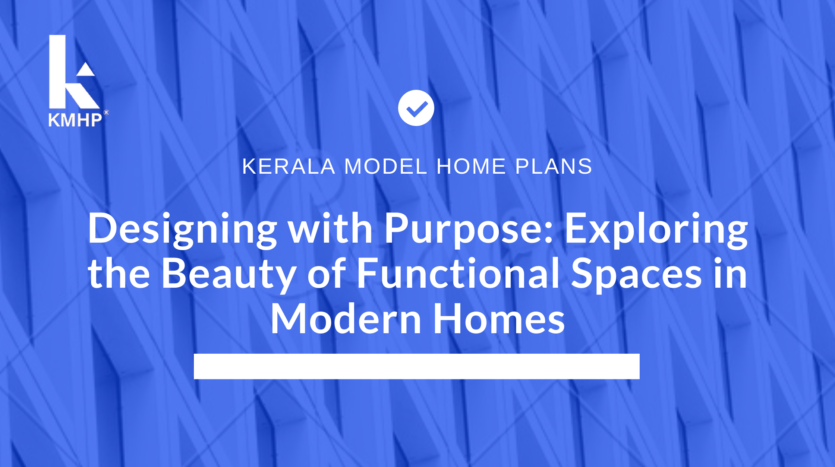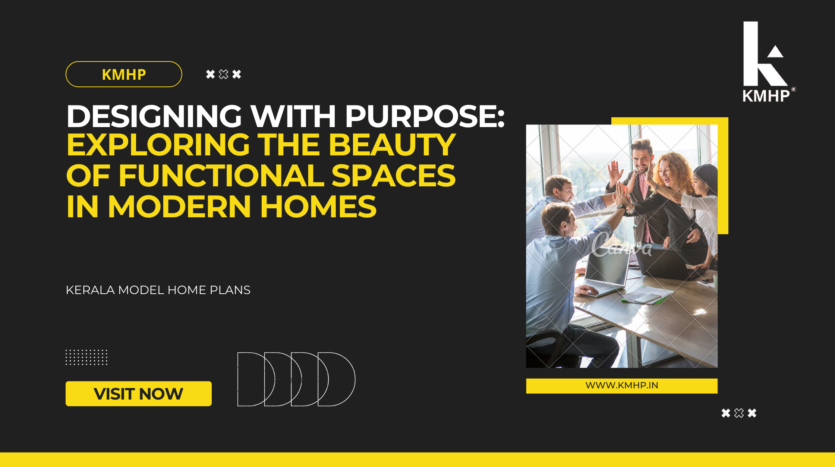In the realm of home design, the focus has shifted beyond mere aesthetics and has embraced a new paradigm – designing with purpose. Modern homeowners are increasingly seeking functional spaces that not only exude beauty but also cater to their practical needs. This article explores the inherent beauty found in functional spaces within modern homes and delves into the principles, strategies, and elements that contribute to their success. By understanding the significance of purposeful design, homeowners can create harmonious and well-utilized spaces that enhance their daily lives while captivating the eye.

Understanding Functional Spaces: Creating a Harmonious Flow
The Significance of Spatial Planning
Spatial planning is the art of arranging and organizing the various functional spaces in a home to create a harmonious flow. It involves considering factors like the size and shape of rooms, the placement of doors and windows, and the relationship between different areas. A well-planned space ensures that there is a logical progression from one room to another, making it easy and intuitive to move around the house.
Analyzing Traffic Flow in Functional Spaces
When designing functional spaces, it’s crucial to analyze the traffic flow within them. Traffic flow refers to the movement of people within a space. For example, in a kitchen, the flow should be designed in a way that allows for efficient movement between the cooking and prep areas. By understanding how people will move through a space, designers can optimize the layout to minimize obstacles and create a seamless experience.
Embracing Minimalism: Simplifying Spaces for Maximum Functionality
The Core Principles of Minimalist Design
Minimalist design is all about simplicity and stripping away excess to focus on what’s essential. It emphasizes clean lines, a neutral color palette, and a clutter-free environment. By embracing minimalism, functional spaces can be simplified and decluttered, allowing for maximum functionality and ease of use. Minimalist design also promotes a sense of calm and tranquility, creating spaces that are both practical and visually pleasing.
Maximizing Functionality through Minimalist Aesthetics
Minimalism doesn’t mean sacrificing style; in fact, it can enhance it. By removing unnecessary elements and keeping only the essentials, functional spaces become more efficient and purposeful. For example, in a minimalist kitchen, open shelving can replace bulky upper cabinets, making it easier to access and organize kitchen items. By focusing on simplicity and functionality, minimalist design can transform functional spaces into beautiful and highly practical areas.
Balancing Aesthetics and Functionality: The Art of Designing Beautifully Practical Rooms
Harmonizing Aesthetic Appeal and Function in Room Design
Designing beautifully practical rooms requires finding the perfect balance between aesthetics and functionality. While it’s essential to create spaces that are visually appealing, it’s equally important that they serve their intended purpose effectively. This can be achieved by selecting furniture and materials that not only look good but also provide comfort and durability. Incorporating elements like storage solutions that blend seamlessly with the overall design can also contribute to a harmonious balance between aesthetics and functionality.
Incorporating Practical Elements without Sacrificing Style
Practical elements don’t have to be eyesores. In fact, they can be integrated into the design in a way that enhances the overall style of a room. For example, incorporating hidden storage solutions or multi-functional furniture can maintain the visual appeal while keeping the space organized and clutter-free. The key is to think creatively and consider the dual purpose that certain elements can serve in a room. This way, functionality can coexist with style, resulting in beautifully practical spaces.
Integrating Technology: Enhancing Functionality in the Modern Home
The Role of Smart Home Technology in Functional Spaces
In today’s modern homes, technology has become an integral part of our lives. From smart thermostats to voice-controlled assistants, we rely on technology to simplify our daily tasks and enhance our living experience. When it comes to functional spaces, incorporating smart home technology can take functionality to a whole new level. Imagine controlling your lighting, temperature, and entertainment systems with a simple voice command or a tap on your smartphone. With smart technology, you can seamlessly integrate automation into your functional spaces, making your home more efficient and convenient than ever before.
Creating Seamless Integration of Technology in Design
While technology brings endless possibilities, it’s important to ensure that it seamlessly integrates into the overall design of your home. Functionality should never come at the expense of aesthetics. When designing with technology in mind, consider how it can be discreetly incorporated into your space. For instance, you can hide wiring and devices behind walls or within furniture to maintain a clean and clutter-free look. Additionally, choosing technology that complements the style and theme of your home will ensure a cohesive and visually appealing design. Remember, functional spaces can be technologically advanced without sacrificing style and beauty.
Incorporating Nature: Creating Serene and Functional Outdoor Spaces
The Benefits of Outdoor Functional Spaces
In the hustle and bustle of modern life, finding a serene escape within the confines of your own home is a luxury worth investing in. Outdoor functional spaces offer just that – a retreat where you can unwind, reconnect with nature, and enjoy quality time with loved ones. Incorporating nature into your outdoor space not only adds beauty but also provides numerous health benefits. From reducing stress to improving air quality, spending time in natural surroundings can rejuvenate both the mind and body.
Designing Outdoor Spaces for Relaxation and Entertainment
When designing outdoor functional spaces, it’s essential to consider how they will be used. Will it be a quiet sanctuary for relaxation or a lively space for entertaining guests? By understanding your needs and preferences, you can create an outdoor space that caters to your lifestyle. This may involve adding comfortable seating, creating designated dining areas, or installing a cozy fire pit for chilly evenings. Furthermore, incorporating greenery, such as plants and landscaping, can enhance the overall ambiance, making your outdoor space feel like a tranquil oasis.
Adapting to Changing Needs: Designing Flexible and Multifunctional Rooms
The Importance of Versatile Room Design
As our lives evolve, so do our needs and priorities. Designing rooms that can adapt to these changes is essential in creating functional spaces in modern homes. Versatile room design allows you to make the most of your space, no matter the situation. It may mean incorporating furniture with hidden storage, using modular pieces that can be rearranged, or creating multi-purpose zones within a room. By embracing flexibility, you ensure that your functional spaces can effortlessly accommodate your changing lifestyle.
Strategies for Designing Multifunctional Spaces
Designing multifunctional spaces requires careful planning and consideration of how different activities can coexist harmoniously. Start by identifying the various functions the room needs to serve and prioritize them based on your lifestyle. Then, think creatively about how these functions can overlap or share space. For example, a home office can double as a guest room by incorporating a pull-out sofa. A dining room can transform into a workspace by adding a desk and storage. By maximizing the functionality of each room, you optimize the use of your space and create a home that adapts to your needs.
- Mein Schweizer Online-casino - June 30, 2025
- Best Online Casinos Australia 2024: Best Au Casino Websites For Real Money - June 30, 2025
- Exploring the Risks of Betting Utan Licens: A Comprehensive Guide - June 29, 2025


